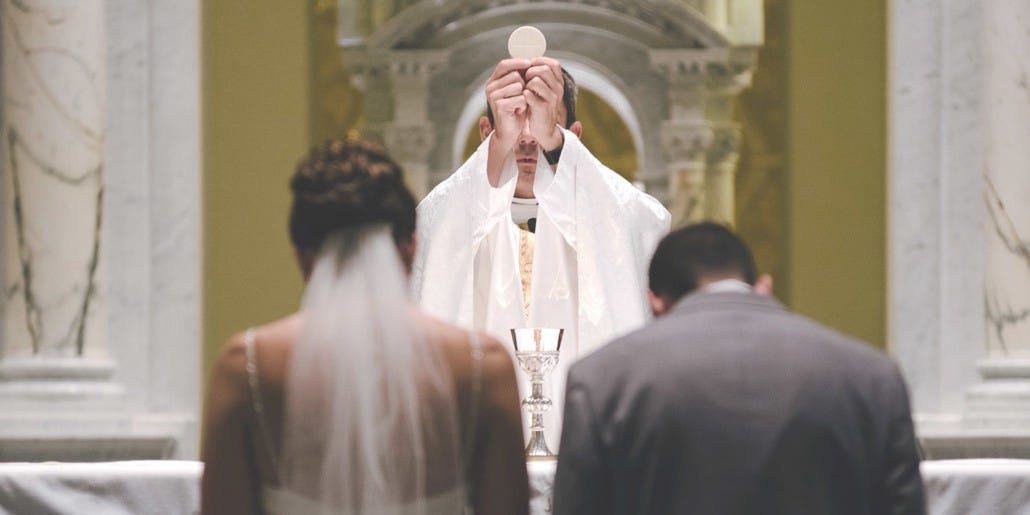The role of dogmatism in Catholicism

At the time of this writing, a new pope was elected today. With the second chapter of Judith Butler’s Who’s Afraid of Gender? being titled Vatican Views, the timing felt appropriate to reflect on and write about the Catholic Church’s normative stance on gender and sexuality. This is not an exploration of the newly elected pope’s views, but rather a critical analysis of how the Church has historically approached gender and sexuality.
Butler opens this chapter by stating:
We considered some instances of the influence of conservative Evangelicals on the anti-gender ideology movement, which is vast and continuing, but the Vatican arguably initiated the contemporary scene. (Who’s Afraid of Gender?, 73)
In the preceding chapter, the focus was on how Evangelical movements across the United States have propagated the “anti-gender ideology movement,” and its heavy influence in upholding a heteronormative agenda. However, Butler moves to focus on the Catholic Church. The Catholic Church preaches a doctrine related to what is constituted as natural. Butler writes:
The proper place for “creation” in the human world is sexual reproduction within the context of heterosexual marriage. (Who’s Afraid of Gender?, 74)
The notion of “creation” is present throughout the Catholic tradition. God is the creator, with nature being his creation, following specific rules set forth by God. The Church equates creation in the human world with sexual reproduction, meaning that the laws of creation in nature must reside in reproduction. However, it is not any kind of reproduction — solely the sexual reproduction found in heterosexual marriages.

Furthermore, Butler identifies a Catholic doctrine that emphasizes the strict, binary division of sex:
Significantly, the doctrine of “complementarity” stipulates not only that the human is defined by man and woman, that God created that division, but also that marriage must be restricted to heterosexuals. (Who’s Afraid of Gender?, 75)
The doctrine of “complementarity” is preached by many priests in the Catholic Church. Its general claim is that God established the division of the human into two sexes: male and female. And this implies that a union between the two is necessary. Anything else would fall short of God’s plan. Butler notes, however, that theologians themselves are not in agreement on this. Many theologians find the doctrine of “complementarity” to not have a basis in history as it becomes present in Church doctrine in the second half of the 20th century as a reactionary response to various LGBTQ+ movements.
Yet this logic has persisted, even among the so-called “accepting” popes. In a 2014 address, Pope Francis asserted that the family is both an anthropological truth and, by extension, a cultural fact. By framing this view as rooted in anthropology, he reinforces the idea that sex, gender, and sexuality are grounded in a fixed, natural order. There is only one form of the family:
The effort to quash any qualifications on family serves the purpose of keeping family in a single, acceptable form. (Who’s Afraid of Gender?, 76)
The Catholic Church preaches that there is a single, acceptable form of the family, and completely dismiss alternative perspectives. They find alternative viewpoints to be rooted in a dictatorial ideology. Butler explains:
But the practice of ruling out alternate possibilities of kinship when they already exist is surely an ideological move! (Who’s Afraid of Gender?, 76)
Once again, as we saw in the first chapter, the anti-gender movement is full of contradictions. To dismiss possibilities of kinship — all the queer relations that exist — is predicated on an ideology itself because these relations are found in nature.

If the Church is embedded in ideology — even though they claim to solely highlight their doctrine as the reflection of a natural order — they themselves are propagating their own theory of gender. But because the Church refuses to engage with alternative perspectives, it is incredibly dogmatic:
For the Church, “dogmatic” is good because it is in line with Christian dogma on how the human is to be defined. (Who’s Afraid of Gender?, 79)
Typically, calling someone “dogmatic” carries a negative connotation. The Church, however, openly embraces its dogmatism, seeing it as consistent with what it views as the correct understanding of the natural order. Yet this very embrace reveals the authoritarian nature of its stance. While accusing LGBTQ+ individuals of indoctrinating children, the Church itself relies on rigid dogma to assert its beliefs.
Butler continues:
The Vatican provides no proof that children are being “indoctrinated” by gender dictators, but the phantasm nevertheless serves a purpose, given that the Vatican regards its own doctrine as dangerously challenged by a theory that it can only regard as a rival doctrine. (Who’s Afraid of Gender?, 80)
The Vatican warns the public that children are being indoctrinated by gender theorists and LGBTQ+ individuals, yet offers no evidence to support this claim. Drawing on the work of psychoanalyst Jean Laplanche, Butler conceptualizes gender as phantasmic — something immaterial and elusive, continually targeted by the anti-gender movement but never fully grasped or materially defined.
Regardless, Butler makes clear that some individuals might underestimate the Catholic Church’s influence on the anti-gender movement:
The influence of the Vatican’s “critique” of gender as destructive of the human, family, nation, and God-given natural order should not be underestimated, even in regions where countervailing progressive agendas have made clear gains. (Who’s Afraid of Gender?, 83)
Butler cites material gains made in countries, but this has not been without challenges. The Vatican is consistently preaching a doctrine that is in opposition to LGBTQ+ life, with tons of donors who remains anonymous as they do not have to disclose their donations publicly. The LGBTQ+ struggle is an ongoing one.

Butler writes:
It hardly matters that the lesbian and gay movement is opposed to the sexual abuse of children, and that it is in fact the Catholic Church that is at risk of bankruptcy after paying reparations to all the children it has abused over the decades. (Who’s Afraid of Gender?, 85)
The Church describes LGBTQ+ plus movements as lacking a comprehensive understanding of morality. Their claim is that when homosexual relations become normalized, there will be a kind of amoral relativism where anything goes. However, Butler notes that LGBTQ+ movements are rooted in particular moral goals such as individuals being given their right to love, live, healthcare, and to not be dispossessed. Unlike the LGBTQ+ movements, the Catholic Church has been responsible for thousands of sexual abuse cases against children. The question, then, becomes why the Catholic Church is able to preach that LGBTQ+ movements are rooted in an amoral relativism while simultaneously engaging in horrific sexual abuse.
Some have posited that engaging in dialogues with members of the clergy, but this fails:
There is no discussion, because dogma rules out discussion. (Who’s Afraid of Gender?, 87)
One cannot reason or engage in a critical discussion about gender theory with those who adhere to the Catholic faith because they have already decided it is not a conversation worth having. This allows them to continually shift blame upon LGBTQ+ people, while never engaging in a conversation about their own terrifying practices:
The long list of child molestation charges against priests in the Catholic Church illuminates with brutal clarity how the proscriptions against open and consensual gay and lesbian sexuality or marriage are sponsored by religious institutions that themselves engage in sexual coercion that predominately harm children, and that then are quick to disavow the massive harm they have caused. (Who’s Afraid of Gender?, 88)
The child molestation scandals involving numerous Catholic priests serve as a clear instance of “the call coming from inside the house.” The Church’s vehement disavowal of LGBTQ+ lives — and its accusations that LGBTQ+ individuals engage in behavior that indoctrinates or harms children — is deeply ironic. All of this is a result of the very dogmatism that Butler critiques.
Butler ends this chapter by discussing the phantasmic role of gender:
Those who seek to make queer life unthinkable have, in fact, already thought it, which is why their efforts are invariably fraught and repetitious. (Who’s Afraid of Gender?, 90)
The general idea is the the Catholic Church tries to render LGBTQ+ life unthinkable, something that should be pushed away. Yet, in order to this, they have already thought about it. Therefore, the Church constantly needs to lash out against the very phantasm of gender that is embedded within its psychic libidinal economy.

Leave a Reply